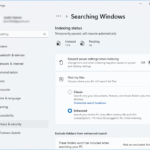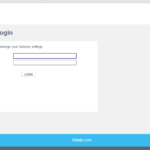Command Prompt, a powerful command-line interpreter, has been an integral part of Windows for decades, and continues to be so in Windows 11. It provides a direct line of communication between the user and the operating system, and enables the execution of various tasks such as file and directory manipulation, system troubleshooting, and script running. Here’s a detailed guide on how to use Command Prompt for managing files in Windows 11.
Command Prompt hasn’t changed that much over time, and a lot of these rules will still apply to a majority of the versions of Microsoft Windows.

- Opening Command Prompt: Press the Windows key or click the Start button and type “cmd” or “Command Prompt”. Click on the app to open it.
- Navigating Directories: The ‘cd’ (Change Directory) command is used for navigating between directories or folders. For instance,
cd Downloadswill change the current directory to the ‘Downloads’ folder. Usecd ..to move back one directory level. To go directly to a specific path, you can usecd C:\path\to\your\folder. - Listing Contents: To see the contents of a directory, use the ‘dir’ command. Simply type
dirand press Enter. This will list all the files and folders in the current directory. - Creating a New Directory: The ‘mkdir’ (Make Directory) command is used for creating a new folder. For instance,
mkdir NewFolderwill create a new folder named ‘NewFolder’ in the current directory. - Deleting a Directory: The ‘rmdir’ (Remove Directory) command is used for deleting a directory. For instance,
rmdir UnwantedFolderwill delete the ‘UnwantedFolder’ if it is empty. To delete a directory and its contents, usermdir /s UnwantedFolder. - Creating a New File: You can create a new file using the ‘copy con’ command followed by the filename and extension. For example,
copy con example.txt, then type the text you want in the file. Press Enter and then pressCtrl+Zand Enter again to save the file. - Deleting a File: The ‘del’ command is used for deleting files. For instance,
del UnwantedFile.txtwill delete the file named ‘UnwantedFile.txt’ in the current directory. - Renaming Files or Directories: The ‘ren’ (Rename) command is used for renaming files or folders. For instance,
ren OldName.txt NewName.txtwill rename the file ‘OldName.txt’ to ‘NewName.txt’. - Copying Files: The ‘copy’ command is used for copying files from one location to another. For instance,
copy source.txt C:\destination\will copy the file ‘source.txt’ to the specified destination. - Moving Files: The ‘move’ command is used for moving files from one location to another. It works similarly to the ‘copy’ command, e.g.,
move source.txt C:\destination\.
Remember, Command Prompt is a powerful tool, so use these commands carefully. Also, to run some commands, you may need to open Command Prompt as an Administrator. This guide serves as a basic introduction, but there are many more commands and functionalities that you can explore with Command Prompt. Always remember to look for the most updated and accurate information as per your version of the operating system and individual requirements.


